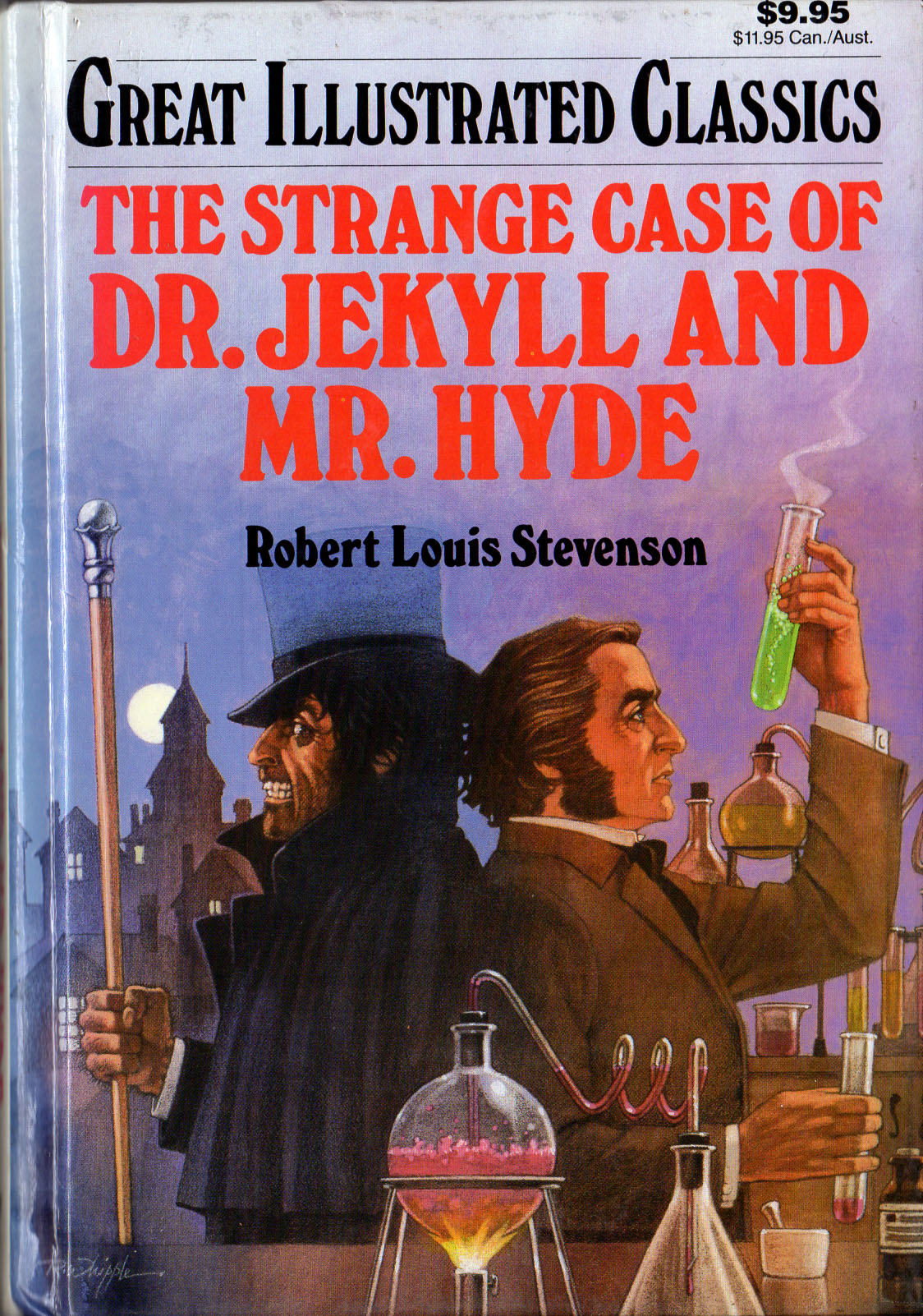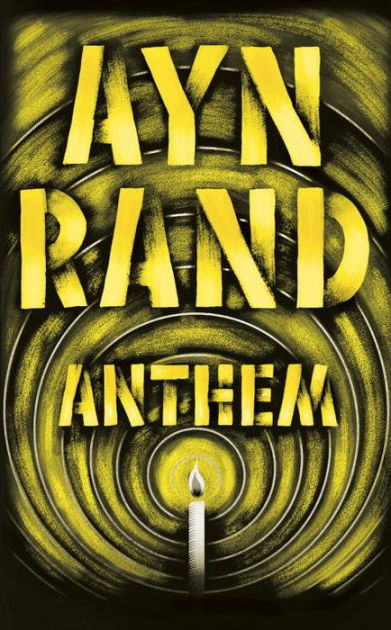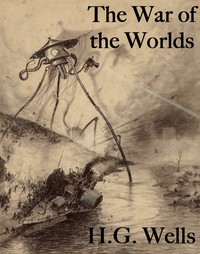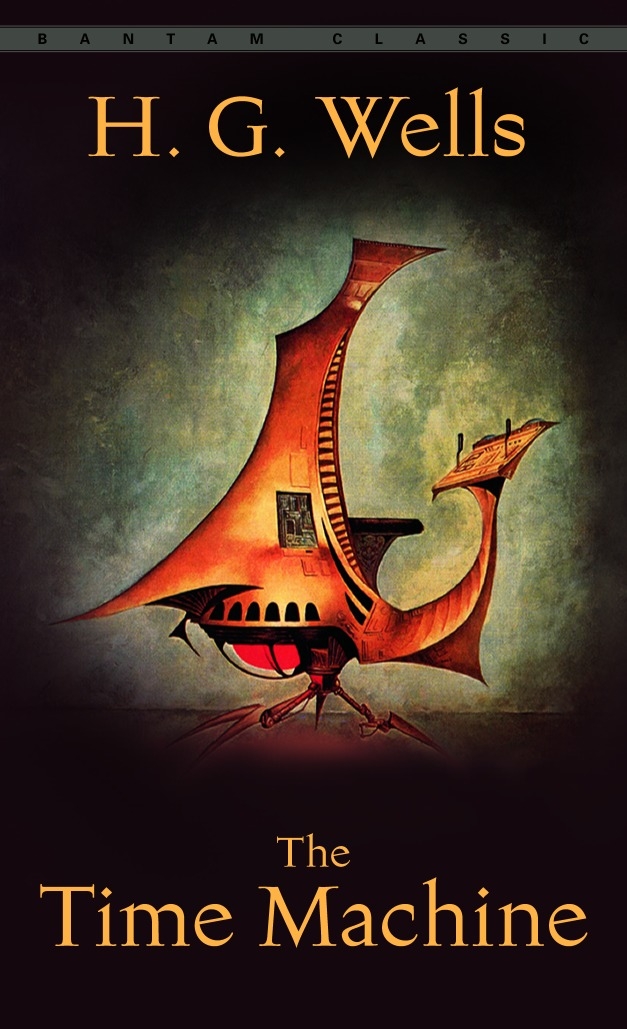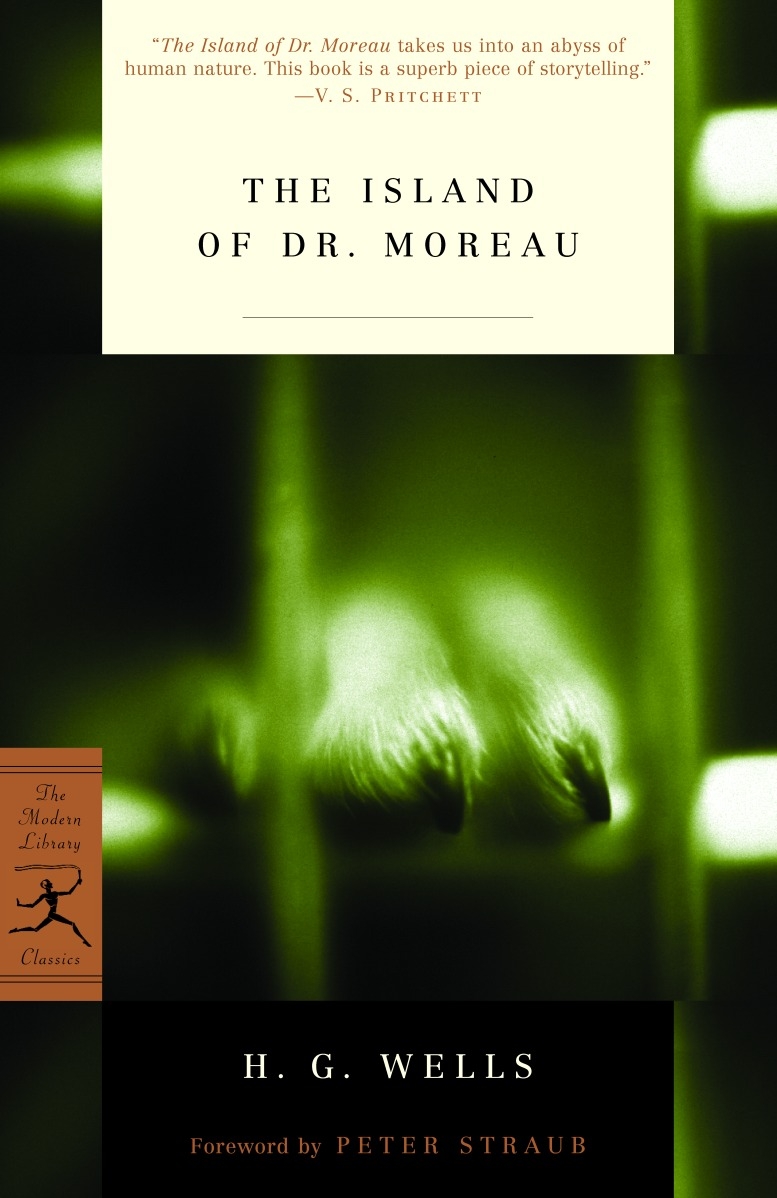Discover Pandipedia
Pandipedia is the world's first encyclopaedia of machine generated content approved by humans. You can contribute by simply searching and clicking/tapping on "Add To Pandipedia" in the answer you like. Learn More
Expand the world's knowledge as you search and help others. Go you!
Frankenstein by Mary Wollstonecraft Shelley
A pioneering mix of science fiction and Gothic horror about a scientist who creates life.[1]
The Strange Case of Dr. Jekyll and Mr. Hyde by Robert Louis Stevenson
A novella exploring dual human nature through a doctor’s dangerous experiment.[1]
Anthem by Ayn Rand
A dystopian novella set in a collectivist future where individualism is forbidden, following Equality 7-251.[1]
The War of the Worlds by H.G. Wells
An early alien invasion tale featuring Martians and exploring human vulnerability in catastrophic conflict.[1]
The Time Machine by H.G. Wells
A time travel adventure where a traveler discovers future societies of the Eloi and Morlocks.[1]
The Island of Dr. Moreau by H.G. Wells
A provocative tale of ethics and vivisection as a shipwrecked man discovers an island under a mad scientist.[1]
A Connecticut Yankee in King Arthur's Court by Mark Twain
A humorous time-travel novel where a modern American confronts medieval society with satirical flair.[1]
A Princess of Mars by Edgar Rice Burroughs
An adventure on Mars featuring a Civil War veteran and exotic aliens that started the Barsoom series.[1]
Let's look at alternatives:
- Modify the query.
- Start a new thread.
- Remove sources (if manually added).
- Request a manual search from our human research team.
Introduction: The Rise of Automated Design of Agentic Systems
Researchers are directing significant efforts toward creating powerful general-purpose agents by leveraging Foundation Models (FMs) like GPT and Claude[1]. Unlike monolithic models, these agents often require complex systems, integrating various components such as chain-of-thought planning, tool usage, and self-reflection[1]. Yet, these designs usually need extensive manual fine-tuning from researchers and engineers[1].
However, history shows that hand-crafted solutions in machine learning are eventually replaced by more efficient, learned solutions[1]. Building on this premise, this work introduces a new research area called Automated Design of Agentic Systems (ADAS). ADAS aims to automatically invent novel building blocks and optimize entire agentic system designs[1]. The ultimate goal is to create increasingly powerful agents that outperform state-of-the-art hand-designed solutions[1].
The Vision of ADAS
To revolutionize agentic system design, ADAS focuses on automating the creation of these systems by using meta agents. Meta agents are designed to program better agents iteratively in code, leveraging the Turing completeness of programming languages like Python[1]. This approach allows for the possible learning and discovery of any agentic system, including novel prompts, control flows, and tool use[1]. The Meta Agent Search algorithm demonstrates this concept effectively[1].
Key Components of ADAS
To operationalize ADAS, three components are essential:
Search Space: This defines which agentic systems can be represented. For example, some works optimize text prompts, while others explore graph structures or feed-forward networks[1].
Search Algorithm: It specifies how ADAS explores the search space. Effective algorithms balance rapid discovery of high-performance systems while avoiding local optima[1]. Variants include reinforcement learning or iterative generation by FMs.
Evaluation Function: Depending on ADAS's application, this function assesses candidate agents based on various criteria like performance, cost, and latency[1].
Meta Agent Search: The Core Algorithm

Meta Agent Search is one of the initial algorithms within ADAS that operates entirely in a code space. The meta agent iteratively creates new agents, evaluates their performance, adds them to an archive, and uses this archive for subsequent iterations[1]. By continuously incorporating feedback and refining its approach, the meta agent can build progressively more effective agents. Initial evaluation has shown Meta Agent Search's ability to greatly outperform hand-designed agents across multiple domains, including coding, science, and math[1].
Case Study: The ARC Challenge
One demonstration of Meta Agent Search's efficacy is the ARC (Abstraction and Reasoning Corpus) challenge. This task evaluates AI systems' general intelligence by requiring them to learn transformation rules from a few examples and apply them to new inputs[1].
Setup and Comparison

To address ARC's challenges, the agent writes code for transformation rules instead of direct answers. The experiment involved comparing Meta Agent Search against five state-of-the-art hand-designed agents[1]:
Chain-of-Thought (COT)
Self-Consistency with Chain-of-Thought (COT-SC)
Self-Refine
LLM Debate
Quality-Diversity through Method Scaling
The best-discovered agent from these Meta Agent Search runs employed a sophisticated feedback mechanism, iterating through trials of multi-step reviews and refinements. This sophisticated process improved overall predictive accuracy significantly compared to baselines[1].
Beyond ARC: Extending to Multi-domain Challenges
Benchmarks in Reading, Math, and Problem-Solving

Meta Agent Search was also tested on four popular benchmarks: DROP for reading comprehension, MGSM for multilingual math, MMLU for multi-task problem-solving, and GPQA for advanced science questions[1]. The ADAS approach consistently discovered high-performing agents in all tested domains, improving preceding state-of-the-art solutions by substantial margins[1].
For example, in reading comprehension tasks, the algorithm improved F1 scores by 13.6/100 points, and in math tasks, accuracy rates increased by 14.4%[1]. The discovered agents also demonstrated significant robustness, maintaining superior performance when transferred across models and domains[1].
Generalization and Transferability

An important aspect of Meta Agent Search is the generalizability of the discovered agents. Experiments showed that agents optimized on one FM, like GPT-3.5, performed well when transferred to other models such as Claude-Sonnet and GPT-4[1]. This transferability illustrates these agents' robustness and their potential applicability to a wide array of tasks and environments.
Moreover, agents developed in specific domains, such as math, generalized well to non-math domains like reading comprehension and multi-task problem-solving. This ability to adapt and perform across varied areas underscores the broad utility and effective design of ADAS-generated agents[1].
Future Directions and Safety Considerations
While ADAS promises a fast track to developing advanced agentic systems, it also raises significant safety concerns. There is a pressing need to run untrusted code safely and ensure that the generated agents are honest, helpful, and harmless. Developing sandbox environments and incorporating principles from Constitutional AI might be crucial future steps[1].
Potential future research areas in ADAS include higher-order ADAS for self-improving meta agents, introducing more existing building blocks into the search space, integrating multi-objective optimization, and developing more sophisticated evaluation functions[1]. Extending this approach to more complex real-world applications and understanding the emergence of complexity in human organizations are additional avenues[1].
Conclusion
The Automated Design of Agentic Systems (ADAS) represents an exciting new frontier in AI research. By automating the creation of complex, powerful agents, ADAS offers a promising path toward increasingly efficient and effective AI systems that can significantly advance various real-world applications[1].
By demonstrating superior performance across diverse domains and proving robust transferability, ADAS underscores the potential to revolutionize AI development from the foundational level up[1].
Let's look at alternatives:
- Modify the query.
- Start a new thread.
- Remove sources (if manually added).
- Request a manual search from our human research team.
Get more accurate answers with Super Search, upload files, personalised discovery feed, save searches and contribute to the PandiPedia.
Let's look at alternatives:
- Modify the query.
- Start a new thread.
- Remove sources (if manually added).
- Request a manual search from our human research team.
Visual symmetry has long been associated with aesthetic appeal and satisfaction, influencing various domains from art and design to human perception and emotional response. Understanding how symmetry evokes satisfaction reveals deep insights into both our psychological make-up and our cultural practices.
Psychological Underpinnings of Symmetry Preference
The preference for symmetry is rooted in our cognitive processes. Humans have an innate sensitivity to symmetrical displays. Research indicates that adults can detect symmetrical visual patterns faster and more accurately than asymmetrical ones, suggesting a biological predisposition to respond positively to symmetry[5]. This has implications for our emotional well-being, as balanced compositions can elicit feelings of calmness and stability, contributing to a sense of visual satisfaction[7][8].
Furthermore, the fluency hypothesis posits that we derive pleasure from stimuli that are easy to process. Symmetrical objects tend to have less visual information for the brain to interpret, allowing for quicker recognition and processing, which in turn can foster positive affect[3]. This notion is reinforced by studies showing that harmonious designs are perceived as more positive and inviting, thus enhancing user engagement and experience[1][6].
Aesthetic Experiences in Art and Design

Symmetry plays a pivotal role in various forms of artistic expression, including graphic design, painting, and photography. For instance, graphic designs that incorporate symmetrical elements are often perceived as more organized and appealing. This is because 'symmetrical designs often appear aesthetically pleasing and familiar' to viewers, leading to increased trust and engagement with the content presented[2][6]. An example of this can be seen in brand logos that utilize symmetry to communicate stability and reliability, such as those of Apple and Adidas[2].
In art, symmetry's allure can be traced back to ancient cultures where it conveyed concepts of divine order and beauty. The symmetry found in Renaissance art reflects the society's pursuit of ideal beauty and proportion[8]. Works like Leonardo da Vinci's 'Vitruvian Man' exemplify these ideals, showing how proportionality and symmetry can create a satisfying visual effect that resonates with viewers.
Cultural Dimensions of Symmetry
Beyond individual psychology, symmetry carries cultural significance, influencing collective aesthetics and interpretations. Across various societies, symmetrical designs symbolize harmony and balance. In Eastern cultures, for example, symmetry is essential in traditional arts, representing serenity and interconnectedness with nature[8]. This cultural aspect is not just about beauty; it intertwines with philosophical and spiritual beliefs, embodying deeper meanings related to human experience and identity.
Moreover, symmetry also finds its place in fashion and branding, where it contributes to a brand's identity and emotional appeal. Designers often exploit symmetrical patterns to evoke feelings of luxury and professionalism, reinforcing the idea that visual balance plays a critical role in consumer perception and satisfaction[6][9].
Mechanisms of Visual Balance in User Experience
In digital interfaces, the impact of visual symmetry extends to user experience and navigation. Designers strive for visual balance to guide user attention and enhance interaction. A symmetrical layout allows users to process information more efficiently, promoting an intuitive user experience. Studies suggest that a well-balanced design fosters user satisfaction by providing a sense of order and predictability while reducing cognitive load[6].
Conversely, asymmetry can be employed strategically to create dynamic tension and interest. However, careful consideration of balance is necessary; excessive asymmetry might disrupt user engagement, leading to confusion and frustration[6][8]. Understanding the interplay between symmetry and asymmetry thus enables designers to enhance visual appeal while facilitating user interaction effectively.
Conclusion
Visual symmetry creates satisfaction through a complex interplay of psychological, cultural, and aesthetic factors. Our innate preference for balanced designs stems from biological predispositions favoring efficient processing, which enhances emotional responses. In art and design, symmetry's power lies in its ability to convey harmony and balance, influencing how we perceive beauty and evoke emotional connections. As designers and artists continue to explore these dynamics, the integration of symmetry into various creative expressions will remain essential in crafting experiences that resonate deeply with audiences. Whether in a piece of art, a brand logo, or a user interface, the presence of symmetry plays a crucial role in establishing satisfaction and harmony in our visual world.
Let's look at alternatives:
- Modify the query.
- Start a new thread.
- Remove sources (if manually added).
- Request a manual search from our human research team.
Let's look at alternatives:
- Modify the query.
- Start a new thread.
- Remove sources (if manually added).
- Request a manual search from our human research team.
Let's look at alternatives:
- Modify the query.
- Start a new thread.
- Remove sources (if manually added).
- Request a manual search from our human research team.
Get more accurate answers with Super Search, upload files, personalised discovery feed, save searches and contribute to the PandiPedia.

Introduction
William Shakespeare is heralded as one of the most influential figures in English literature. His works, ranging from plays to poems, have left an indelible mark on various aspects of literature, transforming storytelling, language, and character development. This report examines Shakespeare's significant contributions, as culled from various sources.
Contributions to the English Language

One of Shakespeare's most profound impacts was on the English language itself. He invented approximately 1,700 words by changing nouns into verbs, verbs into adjectives, and blending words. Terms like 'birthplace,' 'dewdrop,' and 'radiance' owe their origins to him[3][5][6]. His inventive wordplay and ability to create new phrases provided the English language with a richness and versatility that were previously unseen[1][3][6]. Phrases such as 'break the ice' and 'wild goose chase' are still in use today, showcasing his lasting imprint on everyday speech[3][5].
Standardization of English
Shakespeare's works played a crucial role in the standardization of the English language during the 17th and 18th centuries. Prior to his influence, grammar rules were not rigorously defined. His usage of consistent and innovative language patterns helped establish norms for English spelling and grammar[3][5]. The reach of his works encouraged the adoption of standardized spelling and grammatical conventions, which facilitated clearer and more effective communication[3][5].
Exploration of Universal Themes
Shakespeare masterfully explored universal themes such as love, jealousy, ambition, and power, which continue to resonate with modern audiences. His ability to delve into the complexities of human emotions and relationships has made his works timeless[1][4]. For instance, the themes in 'Macbeth,' 'Hamlet,' and 'King Lear' focus on inner turmoil and moral dilemmas that are still relevant today[1][4][6]. His portrayal of human nature and societal conflicts remains a gold standard for modern literature[4][6].
Innovations in Characterization and Plot Development
Shakespeare revolutionized character development by introducing complex and multi-dimensional characters. He was among the first to give protagonists nuanced psychological depth, blending their internal struggles with external conflicts[1][6]. Characters like Hamlet, Lady Macbeth, and Othello exemplify this innovation, as their inner lives and motivations drive the narrative forward[1][6]. These richly drawn characters set the stage for modern storytelling, where character complexity is central to narrative appeal.
Influence on Modern Literature and Storytelling

Modern authors, playwrights, and screenwriters continually draw inspiration from Shakespeare's techniques and themes. His exploration of themes like power and ambition in 'Macbeth' has been mirrored in contemporary works such as Hilary Mantel's 'Wolf Hall' and Cormac McCarthy's 'Blood Meridian'[1]. Similarly, the dynamics of power and corruption seen in Shakespeare's plays are echoed in modern critiques of totalitarian regimes, as in George Orwell's '1984' and Margaret Atwood's 'The Handmaid's Tale'[1].
Shakespeare’s Impact on Poetry
Shakespeare's sonnets have had a lasting influence on the world of poetry, both in form and thematic content. His use of sonnets to explore themes of time, beauty, and love has inspired numerous poets over the centuries[3][5]. He popularized the 14-line structure and rhyming patterns, which many poets have emulated, such as Edna St. Vincent Millay and Robert Frost. The emotional depth and psychological insight of his sonnets continue to influence modern poetic practices[1][3][5].
Dramatic Techniques and Their Modern Usage
Shakespeare's use of dramatic techniques such as soliloquies, asides, and dramatic irony has been adopted by contemporary writers to enhance narrative depth and character development. Soliloquies, which reveal characters' inner thoughts, are mirrored in internal monologues in modern literature, such as the musings of Holden Caulfield in 'The Catcher in the Rye'[1]. The use of dramatic irony to engage readers and create tension is prevalent in modern novels, like Khaled Hosseini's 'The Kite Runner'[1].
Adaptations and Reinterpretations
Modern literature frequently reimagines and adapts Shakespeare's works to explore contemporary issues. Margaret Atwood's 'Hag-Seed,' a retelling of 'The Tempest,' recontextualizes the original play to critique the prison-industrial complex[1]. Similarly, Shakespearean archetypes are often repurposed to fit modern narratives, such as the reluctant hero in J.R.R. Tolkien's 'The Lord of the Rings,' inspired by Hamlet[1]. Such adaptations ensure that Shakespeare's themes remain relevant and thought-provoking.
Influence on Film and Television

Shakespeare's plays have been adapted into numerous films and television shows, further cementing his influence on modern storytelling. Baz Luhrmann's 'Romeo + Juliet' sets the classic tale in a contemporary urban environment, combining original dialogue with modern visuals to make the story accessible to new generations[4][6]. These adaptations often retain Shakespeare's themes while offering fresh perspectives, demonstrating the timelessness of his narratives[4][6].
Conclusion
Shakespeare's contributions to English literature are monumental and multifaceted. His inventive use of language, exploration of universal themes, and innovations in characterization and plot development have left a lasting impact on modern literature, poetry, and storytelling. Through continued adaptations and reinterpretations, Shakespeare's works remain a vital and dynamic part of contemporary culture, proving the Bard's enduring relevance and influence.
Let's look at alternatives:
- Modify the query.
- Start a new thread.
- Remove sources (if manually added).
- Request a manual search from our human research team.
An Era of Resourcefulness and Adaptation
The 1940s was a decade defined by scarcity and the need to make the most of limited supplies. In the midst of World War II, households adapted by using simple, readily available ingredients to create meals that were hearty, filling, and nutritious. Families combined modest ingredients into dishes that not only fed their bodies but also provided a comforting sense of togetherness in challenging times[1][2]. This period was marked by a blend of practicality and creativity in the kitchen, setting the stage for a culinary legacy that still inspires modern home cooking.
The Backbone: Sandwiches and Savory Pastries

One of the standout meals from the 1940s was the sandwich. Crafted to be "appetizing, sustaining and of high nutritive value," sandwiches of that era often consisted of ingredients such as bread, cheese, and a variety of hearty fillings. Day-old bread was preferred for its superior texture, and fillings ranged from corned beef, curry-infused mixtures, to cheese and pickle spreads, all designed to be filling yet economical[1]. Complementing these were savory pastries, which served as versatile options ideal for picnics or packed lunches. Recipes for pastries, including items like fish patties and cheese and vegetable patties, demonstrated how leftovers and limited resources could be transformed into a satisfying, convenient meal[1][2].
Hearty Fillings and Nutritional Staples
During these tough times, the focus was on balancing flavor with nutrition. Savory pastries were enriched with substantial fillings like sausage meat, mashed potatoes, and combinations of cheese and potatoes. For instance, a filling might feature a mix of mashed potatoes seasoned only with salt and pepper, or be enhanced with sausage meat and fresh vegetables to add extra protein and flavor. Such recipes underscored the era's commitment to creating dishes that were both nourishing and gratifying. This approach not only maximized the nutritional value of meals but also embodied the resourcefulness that became a hallmark of 1940s cooking[1][2].
Sweet Treats and Refreshing Beverages
Despite the challenging conditions, dessert and beverages were important parts of the 1940s meal structure. Desserts such as almond biscuits, rock buns, and jam biscuits provided a sweet end to the meal, using substitutions where necessary to overcome ingredient shortages. One inventive creation was the "Potato Apple Cake," which cleverly mixed cooked potatoes with apples and sugar to produce a unique yet delightful dessert that lifted spirits during hard times[1][2]. Alongside these, beverages were crafted with a focus on simplicity. Hot drinks like coffee essence offered warmth and comfort, while cold options such as spiced fruit punch and orange drinks provided refreshing alternatives, ensuring that people of all ages could enjoy a taste of home and tradition[1].
Reviving the Culinary Legacy
Today, there is a renewed interest in vintage cooking, and the recipes of the 1940s offer ample inspiration for modern cooks. Embracing these dishes means more than simply recreating old recipes; it is about understanding the context and resilience behind each meal. By using fresh produce, leftovers, and pantry staples, modern kitchens can echo the resourcefulness of the 1940s. Whether crafting a simple sandwich with day-old bread or experimenting with savory pastries filled with a mix of nutritious ingredients, home cooks can enjoy meals that are both economical and deeply comforting[1][2]. This journey into the past not only preserves valuable culinary techniques but also honors an era that managed to combine practicality with heart, feeding families on both a nutritional and emotional level.
A Tribute to Culinary Ingenuity
The legacy of 1940s comfort foods is a testament to the creativity and perseverance of those who made the best of difficult circumstances. Each recipe tells a story of familial love, community spirit, and the enduring power of food to bring people together. As modern kitchens adapt these classic methods, they continue a tradition that values simplicity, nutrition, and togetherness. In reviving these dishes, we not only celebrate the past but also enrich our present with flavors and ideas that have proven their worth over decades of warm family memories and challenging times overcome[1][2].
Let's look at alternatives:
- Modify the query.
- Start a new thread.
- Remove sources (if manually added).
- Request a manual search from our human research team.

The difference between 'Japan' and 'Nippon' lies in their usage and origin. 'Japan' is the Anglicized name for the country, derived from Marco Polo's reference to 'Cipangu,' likely from the Malaysian word 'Jih-pun,' meaning 'origin of the sun'[3]. In contrast, the Japanese names 'Nihon' and 'Nippon' (日本) are both used by Japanese speakers, with 'Nihon' being the more common form in everyday conversation, while 'Nippon' is often used in formal or official contexts, such as sports events and nationalistic expressions[2][5] .
Historically, 'Nihon' emerged around 700-800 AD and translates to 'the origin of the sun,' indicating Japan's position to the east of the Asian continent[4][3]. 'Nippon' is typically associated with a more formal tone and national pride, while 'Nihon' carries a more casual connotation, especially among younger generations[3][1]. Both terms are accepted and understood, but context often dictates which is used: 'Nippon' is favored in official documents and sports, while 'Nihon' is prevalent in daily life and casual discussions[1][4].
Let's look at alternatives:
- Modify the query.
- Start a new thread.
- Remove sources (if manually added).
- Request a manual search from our human research team.

Defaults are often used by companies and governments to promote what they view as the recommended option
Mr. Schmidtlein[6]
Users like to get the best response they can to their query.
Mr. Dintzer[1]

If the user's not satisfied, they're not going to come back to Google anymore.
Jerry Dischler[4]
There are cases in which defaults are interpreted as an implicit recommendation of what is the right product.
Dr. Rangel[6]
Google's power has allowed it to stall or strangle new entrants.
Mr. Dintzer[7]
Let's look at alternatives:
- Modify the query.
- Start a new thread.
- Remove sources (if manually added).
- Request a manual search from our human research team.


